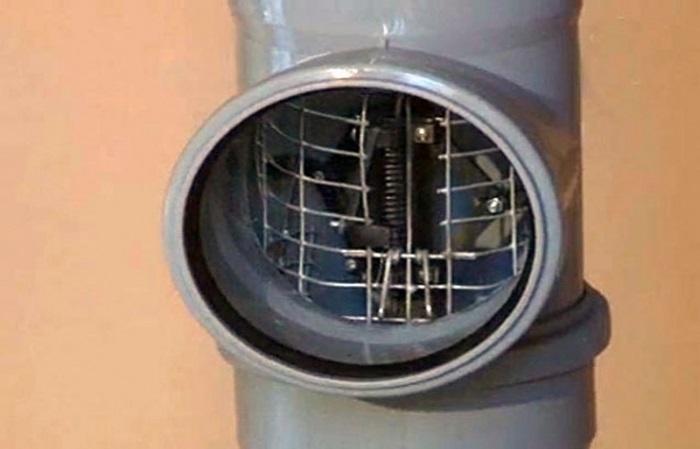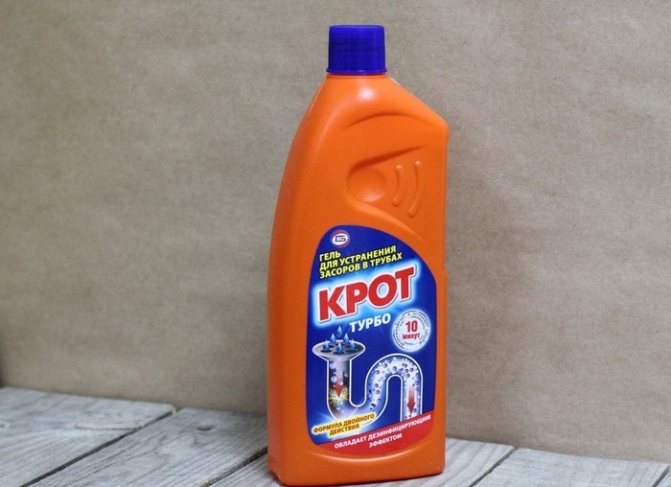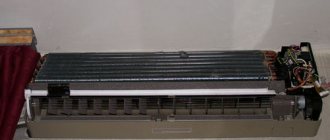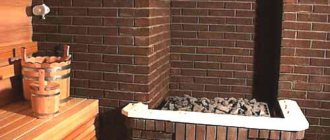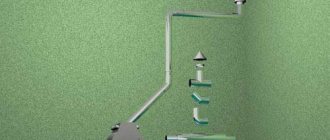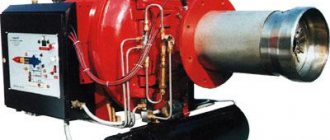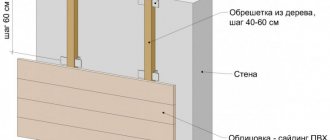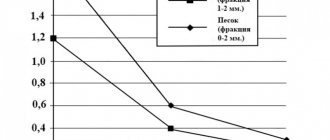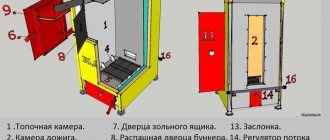Legal bases
In search of a solution to the problem with non-payers, management companies considered various options. Finding an acceptable way is not so easy: the landlord has not only responsibilities, but also a number of rights that must be provided to him.
Blocking water supplies for non-payment seems to be the most obvious option. But this violates the sanitary requirements for housing. Water is supplied through a common riser, it is impossible to shut it off from the outside without depriving all users of the water supply. And the human right to the inviolability of the home allows not to let the inspectors into the apartment and to carry out manipulations with their property.
Then the practice of suspending drainage appeared. It should be noted that such a decision is often made not by the management company itself, but by the court, and is completely legal. But there is a nuance.
The management company is obliged to warn in advance about the decision to stop the provision of sewerage services. This must be done against the signature of the owner of the apartment or by registered mail with notification. If a plug was installed on a sewer pipe without the knowledge of the owner, this can cause problems for the company. Of course, they will not write off the debt to the debtor, but he can demand compensation for moral damage and inconvenience through the court, and the claim will most likely be satisfied. If the management company does not have a paper with a signature on the receipt, it is easy to prove ignorance to the owner.
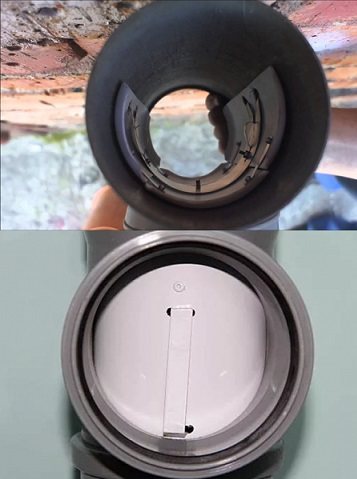
Stub example
https://youtu.be/qEqnNkBrv5A
How the plug is installed
In order to install the plug on the sewer pipe, employees of the management company do not need to gain access to the apartment. Installation is carried out from the technical floor.
The specialist studies the schemes of engineering communications in order to determine how to carry out the work. In some apartments, several risers pass, then the overlap of one will be an annoying nuisance, and not a motivation to pay off the debt.
The procedure takes place using special equipment. It is a device equipped with a camera and illumination to allow the damper to be installed on the correct pipe. The device is supplied in a sewer pipe with a long rope. With his help, the fitting is dismantled, which drowns out the drainage.
Algorithm of actions for installation
The installation of the sewer plug to the debtors is carried out in compliance with important requirements. The owner of the apartment must be notified of the upcoming suspension of the provision of sewerage services in order to be able to pay the debt within thirty days. The sewer pipes of the neighbors must not be affected.
The stub installation process looks like this:
- A sewerage connection diagram is being studied in this particular apartment in order to determine additional risers.
- A plan is being developed to install the plug in a specific place. This is usually the main riser between the system drain and the toilet.
- There is a convenient place to control the equipment. This can be a neighboring apartment above the debtor or a fan pipe that goes to the roof.
- A camera, a light guide and a manipulator are lowered into the tube. The operator, seeing the image on the monitor, brings the plug to the side branch and installs it in the pipe.
After the plug has been installed, the movement of drains from the apartment completely or partially stops, while the sewage system continues to work for neighboring apartments.The situation turns out to be very unpleasant for the debtor, and the company is waiting for the bills to be paid, which usually occurs in a couple of days.
How to remove a stub
If it so happened that the pipe was blocked, there are several ways to remove the plug from the sewer:
Pay the bills.
It is understood that such a measure should motivate the owner of the premises to deal with debts. In this case, the management company itself will remove all obstacles in the way of sewage water. This is the most obvious and logical way, but it doesn't work for everyone.
Contact the professionals.
Not all plumbers like to take on plug removal challenges. This is a time-consuming job, because simple linings are put on less and less, and you have to spend a lot of time and effort to remove it. In addition, an obstacle to a court decision is an unpleasant matter, and not everyone is ready to get involved with this. But there are such companies, ready to remove the installed plug from the sewer, and there are many of them.
Remove the plug yourself.
Of course, this will take even more time than in the case of a professional plumber. It is important to understand how modern plugs are arranged, the principle of their fastening and the procedure for dismantling, so as not to damage your own communications or, more importantly, the main riser, because this will lead to the intervention of the management company.
Types of plugs
There are two types of sewer plugs for hard-core debtors, which create different degrees of discomfort for the residents of the apartment in which the debt has formed. They look different, but they have one function.
- Pneumatic type. This is a bulky rubber product filled with air.
- Solid. A plastic plug that completely blocks the movement of sewage water.
- Lattice. It allows liquids to pass through, but prevents the disposal of solid waste, which gradually accumulates.
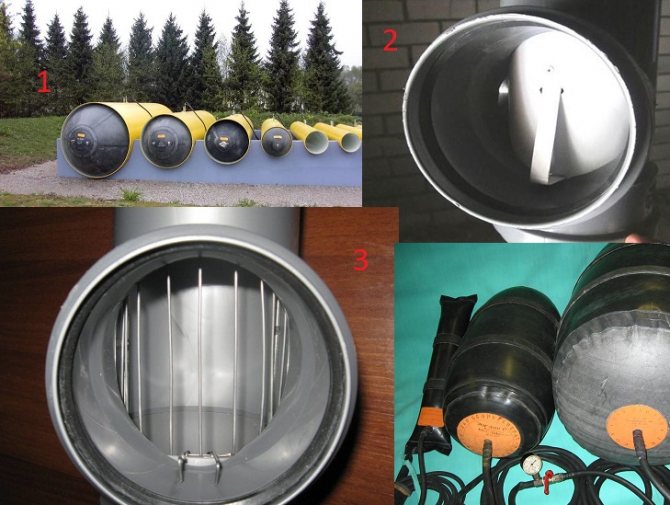

As calculations show, on average, more than 250 liters of liquid waste flows from an apartment into the sewer daily. It will still be possible to use the plumbing for a day or two, then a traffic jam will form, the water will begin to rise and pour back into the apartment. A persistent unpleasant odor forms in the room. It significantly reduces the comfort of living, it will not work to run to neighbors constantly using their sewers, and it is expected that such a situation will become a reason to pay off the debt.
Stub access methods
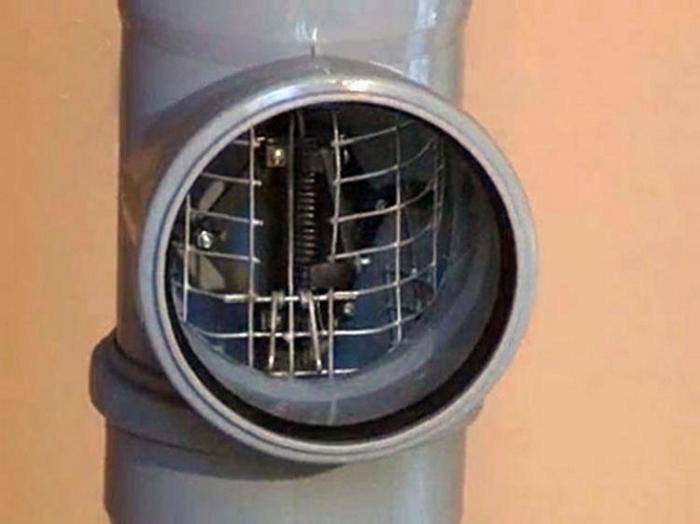

The easiest way is if a so-called revision hole (revision) is installed in the drain pipe for cleaning the sewer pipes from blockages. Through it, the sewer plug is most easily removed.
But the presence of an audit in an apartment sewer system is a great rarity. Another, more time-consuming way to get to the cork is to dismantle the toilet. If it is bolted to the floor, then it is not that difficult. When it is cemented, it is possible that it will hardly be possible to remove it (without replacing it with a new one). Sometimes you can limit yourself to removing the corrugation that connects the toilet bowl to the riser.
Sometimes a drain plug is installed on the drain hole of a smaller diameter riser tee. In this case, it may be necessary to disconnect the pipes connected to this branch pipe.
It is better to work with a riser at night, when the use of it by residents of the entrance is minimal. In this case, of course, do not forget about maintaining silence during work.
Work rules
Removing the plug is not an easy procedure, and before proceeding with it, you need to take care of observing some rules.
- Experience with plumbing is desirable. Imagine how plastic and cast iron pipes are installed, how a plastic plug is installed on the sewer. In most cases, you have to dismantle the toilet, and it is desirable to have this skill too.
- Prepare protective equipment: gloves, gown or old clothing, mask. You will have to work with an open sewer. During this time, waste may be poured from above, including hot water.
- Prepare tools. All manipulations need to be carried out quickly, so what you need should be at hand.
Plugs Removal Methods
The equipment used to install the plugs is also used to remove them. It should be noted that the plugs are introduced and removed through the upper opening of the sewer riser that goes to the roof or to the attic of the building. On a controlled cable, special equipment is lowered, including: a manipulator with a plug, a small-format video camera, a backlight and the very structure on which all this is installed. Upstairs, in the hands of the operator there is a monitor with a joystick, through which control is carried out.


To remove the plug from the sewer on your own, you have to invent other methods. At the same time, it is impossible to find out in advance what type and what design the plug is installed. You can only take into account which pipe it is intended for, cast iron or plastic, if the sewer riser passes through the apartment.
It must be understood that when trying to unauthorized removal of the plug, adverse consequences may occur:
- the apartment will be filled with sewage odors;
- flooding the floor with feces from its sewer, if it is already full;
- you can damage the sewer pipes, including the common riser;
- pushing the plug into the riser and closing it, followed by blockage;
- destruction of the toilet when dismantling it;
- the plug may deform, get stuck in your branch and it will no longer be possible to remove it from the riser using standard equipment;
- during work, residents of the upper floors will continue to use the sewage system and feces will enter your bathroom through an open hole;
- Criminal Code, Homeowners' Association can present the amount of damage for damage to common property, sewer riser.
This is an incomplete list, it is difficult to foresee everything. Therefore, the easiest and most reliable way is to pay debts.... The second way is to use the services of an organization that professionally, without damaging the pipes, will remove the plug. The cost of such a service is from 1.5 to 3 thousand rubles. If, nevertheless, it is decided to remove it on our own, then this can be done in one of the ways indicated below. Note that in all cases, it is better to dismantle the toilet first.
Manual removal
To manually remove the plug, you will need to dismantle the toilet. At the same time, it is impossible to avoid flooding the bathroom and hallway with feces. Therefore, it is worth preparing rags and buckets. If, through the outlet of the pipe from the toilet, you can reach the cork, then this is the simplest and easiest option.


The plug is destroyed by any available method: a crowbar, knife, nippers, drilling. Then it is extracted in whole or in parts. If there is an overlapping spacer inside the riser, then by extrusion it can be lowered lower, or raised higher by opening the hole of your branch.
Tip: if a pneumatic, rubber stopper is installed, then it is first pierced to release air.
Sewer rope application
If the plug has holes, or is made in the form of a lattice, into which you can get with a cable with a hook at the end, then the cable is rotated into the pipe through the plug. Further, by pulling back with force, the plug is removed. In this case, it is very important to securely attach the hook or other grip to the cable. This method is not acceptable for all stubs.


To use this method, it is also necessary to dismantle the toilet. The hard plug is rarely pulled out through its siphon.
A plunger to help
The easiest way is to try to squeeze out the cork using a plunger. But you need to consider the possible and inevitable consequences.If the plug is installed very securely, then most likely the feces will be squeezed out through the weak link of the sewer in the apartment. Therefore, you need to constantly monitor the condition of the sewer pipes and connections. In most cases, they are covered with covers, panels and control is not possible.
The order of work
Non-paying tenants, who do not want to be left without amenities and overpay to plumbers, are trying to remove the plug themselves. In order for the attempts to be successful, you need to act in stages and have a clear idea of how to remove the plug from the sewer yourself.
- Assess the situation. Learn where the plug is installed and how to get to it more conveniently. Most often it is installed on a pipe coming from the toilet, so it will have to be dismantled. This is not difficult with modern models, but if the toilet was installed a long time ago, problems can arise. Often, plumbing is concreted, as a result, you will have to dismantle the floor. This is fraught with not only additional labor intensity, but also unforeseen costs.
- If the plumbing is new, this greatly facilitates the task. First you need to turn off the water and drain it from the tank, then carefully disconnect it. Then you should remove the toilet mountings and move it aside. When working with a key, it is important to be careful not to damage the plumbing.
- Shine a flashlight into the pipe, find out how far the plug is located. If it is rubber, you can pry it off with a hook and pull it out easily. The lattice will be a little more difficult. To remove, you need pliers if the plug is close, or something long, a stick with a hook or a harpoon. It may be necessary to first push the grate forward a little, but you need to do everything carefully, and be sure to carefully remove the plug from the pipe. The easiest option seems to knock it inside, but with a high degree of probability, it will stand across the main riser, causing a blockage. It will, of course, be quickly eliminated, but the management company will find the cause and install a new plug.
First way Second way
REMOVING THE PLUG BY DISCONNECTING THE UNIT AND PARTIAL DISASSEMBLING THE STAND
If desired, it is quite possible to remove the plug installed on the sewer yourself, disassembling the problem area. It should be noted right away that this option is only suitable if the toilet has been installed recently and is bolted to the floor. If the apartment has an old toilet bowl filled with cement, then it is better not even to try to disassemble it, since the toilet bowl will need to be dismantled, which will lead to its deformation, and it will no longer be possible to install it back.
The plug should be located at the entrance to the apartment's sewage system, therefore, in order to gain access to it, you must first remove the toilet. A modern toilet is easy to remove. To do this, you need to shut off the water supply to the apartment. Next, you need to remove the drain tank, unscrew all communications connected to it, including flexible wiring and nuts securing the tank. Then the tank can be removed and set aside.
New toilets are bolted to the floor, and in order to remove such a toilet, you just need to unscrew the bolts and disconnect the bell. Next, the bell must be disassembled to the first connection, which, in fact, is, in most cases, the exit to the common riser. Even at this stage of disassembling the toilet, you can see the plug blocking the drain.
Next, you need to remove the plug itself. At this point, some make a big mistake, trying to push the plug into the riser. If you push the plug into the riser, this will lead to its clogging and the sewage system will not be able to use not only the debtor, but also all other residents using the riser. It is better to remove the plug by pulling it out into the apartment.
If the length of the pipe allows, you can grab it with pliers.If the length of the pipe to the plug is long, you can make a homemade hook or use a fishing harpoon. There are holes in the plugs, so it is not difficult to hook such a "blockage". Then you need to carefully pull it out. If the plug is deformed or crumbled, it can be removed in parts. Work must be done very carefully so that the plug does not push into the riser. After removing the plug, you need to reinstall the toilet. To carry out all work to remove the plug, you will need the following tools:
- adjustable wrench;
- set of wrenches;
- dowels;
- hammer;
- Lantern;
- hard hook or harpoon.
Back to the table of contents
Alternative option
If the toilet is securely fixed in the floor or it is impossible to remove the plug from the sewer, but there is an inspection hatch, it makes sense to act through it. In this case, you need to be careful, because waste or hot water can pour from above, you should not neglect the protection. It's simple:
- First, the inspection window or hatch is opened.
- You need to put in a harpoon or a long stick with a hook, which you will need to pick up the plug. There is a possibility that the tool will slip out of your hands and fall down, you will no longer be able to reach it. Therefore, it is worth tying a rope to the end and leaving it outside, in order to intercept if something happens.
- Carefully pry on the plug and remove it. You need to act very carefully so that it does not fall and block the riser.
After the completion of the work, the hatch must be closed, and the plumbing must be installed in place.
Use of chemistry
Household chemicals that are used every day to clean plumbing fixtures and pipes are quite powerful products. They can be used to dissolve the plug. The method is effective if there is a metal grill. For use, it is better to choose products with oxalic or hydrochloric acid, which are contained, for example, in pipe cleaning preparations.
Chemistry needs to be poured into the toilet (or other plumbing that is closest to the plug) and left for a long time, about a week. The strong acid will dissolve the obstruction and the drain can be used again.
Chemicals


Blockage cleaning chemicals
Now there are many means for cleaning sewers containing oxalic or hydrochloric acid. They can eat away at the plug, but on condition that it is metal, and the owner must have time and patience, because the result will be noticeable in at least a week.
Which method to choose should be decided based on the circumstances and the availability of plumbing accessories. Mechanical intervention is a troublesome process, but the most effective. The chemical method for solving the problem is less effective, but justified by its simplicity.
Installing plugs is an extreme measure that a water utility or communication firms are forced to go to. And if they become aware that the plug has been removed, they will most likely re-install.
Comfortable use of the benefits of civilization is impossible without paying for them. Therefore, if you diligently pay for utilities, then, for sure, you will never have to deal with the removal of plugs, doing hard, dirty, and sometimes unpromising work.
How to prevent the installation of a stub
According to the law, before limiting the provision of any utilities to the debtor, the management company must send a written notice and provide a month to pay off the debts. If for some reason it is impossible to do this, there is time to take preventive measures.
These include an anti-plug for the sewer. This is a service that some companies provide. Often it comes in conjunction with the removal of the stub. That is, the wizard first removes the obstacle, and then prevents its re-installation.
You can also make an impromptu stub. The most common option is to create an obstacle in the path of the equipment.To do this, a long bolt is drilled into the sewer riser and a long bolt is placed, which is filled with sealant so that the drains do not leak into the apartment.
It is important to remember that a sewer riser is a common house property, the damage of which is illegal. The management company has the right to recover the costs of its restoration later through the court.
